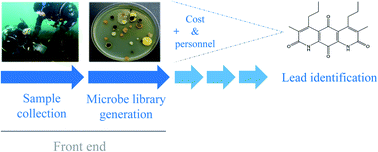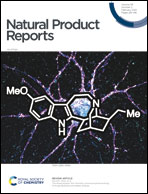The need to innovate sample collection and library generation in microbial drug discovery: a focus on academia
Abstract
The question of whether culturable microorganisms will continue to be a viable source of new drug leads is inherently married to the strategies used to collect samples from the environment, the methods used to cultivate microorganisms from these samples, and the processes used to create microbial libraries. An academic microbial natural products (NP) drug discovery program with the latest innovative chromatographic and spectroscopic technology, high-throughput capacity, and bioassays will remain at the mercy of the quality of its microorganism source library. This viewpoint will discuss limitations of sample collection and microbial strain library generation practices. Additionally, it will offer suggestions to innovate these areas, particularly through the targeted cultivation of several understudied bacterial phyla and the untargeted use of mass spectrometry and bioinformatics to generate diverse microbial libraries. Such innovations have potential to impact downstream therapeutic discovery, and make its front end more informed, efficient, and less reliant on serendipity. This viewpoint is not intended to be a comprehensive review of contributing literature and was written with a focus on bacteria. Strategies to discover NPs from microbial libraries, including a variety of genomics and “OSMAC” style approaches, are considered downstream of sample collection and library creation, and thus are out of the scope of this viewpoint.



 Please wait while we load your content...
Please wait while we load your content...